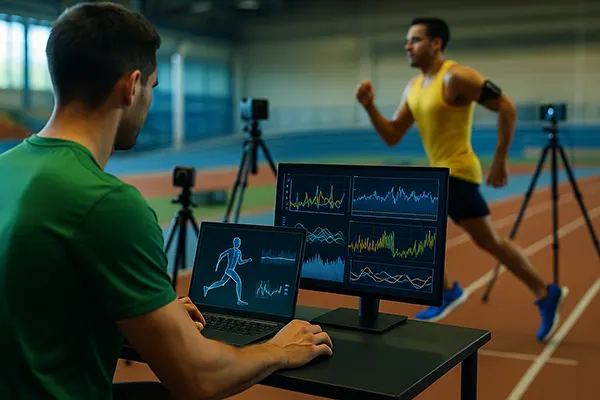
Psychological and Technological Factors Shaping Modern Sports Outcomes
The landscape of contemporary sport has undergone profound transformation as digital tools, analytical systems and new event formats reshape the way athletes perform and the manner in which audiences interpret results. These shifts influence competitive behaviour, pressure dynamics and public perception, while simultaneously altering how coefficients are calculated and adjusted in real time. Understanding these changes is essential for evaluating modern sports with accuracy and context.
Evolution of Technological Systems in Competitive Environments
Advances in performance-tracking systems have introduced precise metrics that reveal patterns unseen in earlier eras. Wearable sensors and high-speed cameras deliver continuous streams of data, helping teams interpret fatigue levels, reaction times and biomechanical shifts. These insights influence tactical planning and define the conditions under which athletes can achieve their peak output.
Real-time decision technologies have altered the rhythm of competition. VAR, automatic goal-line detection and Hawk-Eye remove a degree of uncertainty and reduce the possibility of human error. While outcomes become more consistent, athletes face a different psychological setting, knowing that marginal actions are recorded and reviewed in detail. This awareness affects in-match behaviour and the willingness to take risks.
Analytical software used by coaching teams has remapped preparation strategies. Predictive simulations forecast match scenarios with increased accuracy, giving staff the ability to design micro-adaptations for specific opponents. Such systems broaden the strategic spectrum and subtly influence competitive patterns, which in turn change expectations around coefficients before and during an event.
Impact on Outcome Interpretation and Result Stability
With the arrival of advanced monitoring tools, fluctuations in performance are analysed with higher precision than ever before. Unexpected declines or sudden improvements are no longer perceived as random anomalies; they can often be linked to specific workload indicators, environmental conditions or tactical modifications. This creates a more transparent context for understanding how results develop.
Technological support has stabilised many aspects of officiating, yet it introduces new forms of psychological pressure. Breaks for video review interrupt momentum, forcing athletes to recalibrate focus. Some competitors respond well to these pauses, while others struggle with disrupted flow, producing small shifts that may affect the final result.
High-definition broadcasting and multilayered statistical overlays shape audience interpretation in real time. Spectators follow not only the action but also detailed metrics, influencing public perception of who holds the advantage at each moment. This broader context alters how live coefficients are evaluated across a wide range of events.
The Psychological Dimension of Modern Sporting Performance
Modern athletes manage more external stimuli than any previous generation. Social media exposure, instant commentary and interactive broadcasts create an environment in which mistakes gain immediate traction. This intensifies mental pressure, prompting teams to invest in specialists who develop coping mechanisms tailored to controlled, high-pressure settings.
The shift towards hybrid event formats—combining physical participation with remote engagement—creates unique psychological scenarios. Athletes sometimes compete before reduced or virtual audiences, altering adrenaline responses and emotional pacing. Such changes influence intensity, concentration and energy expenditure, which can shift outcome probabilities in subtle ways.
Enhanced communication tools used by coaching staff allow rapid tactical messaging during events. While this increases strategic adaptability, it can create cognitive overload for some athletes. Maintaining mental clarity under dense information flow has become a critical skill that affects both individual and team outcomes.
Influence on Coefficient Assessment and Market Adjustments
Psychological indicators play a growing role in coefficient evaluation, especially when performance swings can be linked to mental resilience. Analysts increasingly include emotional stability metrics, stress responses and reaction patterns when forecasting event trajectories. These elements help refine expectations around potential turning points.
Shifts in public sentiment—driven by live commentary, interactive polls and social feedback—can indirectly adjust coefficient dynamics. Large-scale audience reactions sometimes influence market interpretation of momentum, particularly in events where confidence plays a central role in performance. This results in faster coefficient updates and increased sensitivity to real-time perception shifts.
Advances in behavioural analytics allow specialists to interpret subtle cues from athlete posture, focus patterns and communication behaviour during live broadcasts. These indicators contribute to more nuanced assessments and help align coefficients with emerging psychological trends that become visible across the event.
New Event Formats and Their Effects on Competitive Outcomes
Hybrid and compressed tournament structures have become increasingly common in elite sport, altering preparation cycles and recovery times. Athletes navigating tighter schedules experience variations in fatigue patterns that influence tactical decision-making and overall stability of results. These factors hold significant weight in the way coefficients are projected.
Remote judging and digital scoring systems, now widely used in several disciplines, introduce new forms of consistency and scrutiny. They allow panels to compare actions with archived examples, reducing subjectivity but also changing how competitors approach risk and precision. This shift influences tactical approaches and generates identifiable patterns in outcome trends.
Virtual fan engagement has redefined the emotional environment of events. With interactive broadcasts, multi-angle replays and audience-driven commentary streams, spectators influence the tempo of public discussion surrounding an event. This expanded feedback loop affects perception of momentum, which can indirectly alter expectations and shape coefficient adjustments.

Transformation of Live Evaluation and Analytical Models
Artificial intelligence models now process immense data sets, comparing live metrics with historical records to project outcome shifts. These systems detect micro-changes that might escape human observation, such as minute alterations in pace or tactical spacing. As a result, coefficient movements become more precise and responsive.
The integration of enhanced broadcast analytics provides specialists with a broader range of contextual indicators. Weather fluctuations, minor changes in athlete condition and micro-tactical shifts are incorporated into live projections. This creates a more dynamic coefficient environment that adjusts in step with the unfolding event.
Short-form event formats, including modified rulesets and accelerated competitions, introduce volatility that demands constant reassessment. Analysts monitor tempo changes, strategic adaptation rates and recovery fluctuations to refine probability models. These evolving conditions influence how outcome likelihoods are understood and reflected in coefficient shifts.
Popular articles
-
 Discovering the Labouchere Strategy
Discovering the Labouchere StrategyBetting systems have long fascinated those who dare to challenge …
-
 Value in bets: what is it and how to ...
Value in bets: what is it and how to ...Value betting or value betting is a systematic approach to …
-
 Adaptive Bankroll Management Consider...
Adaptive Bankroll Management Consider...Managing bankroll effectively is one of the most critical aspects …
